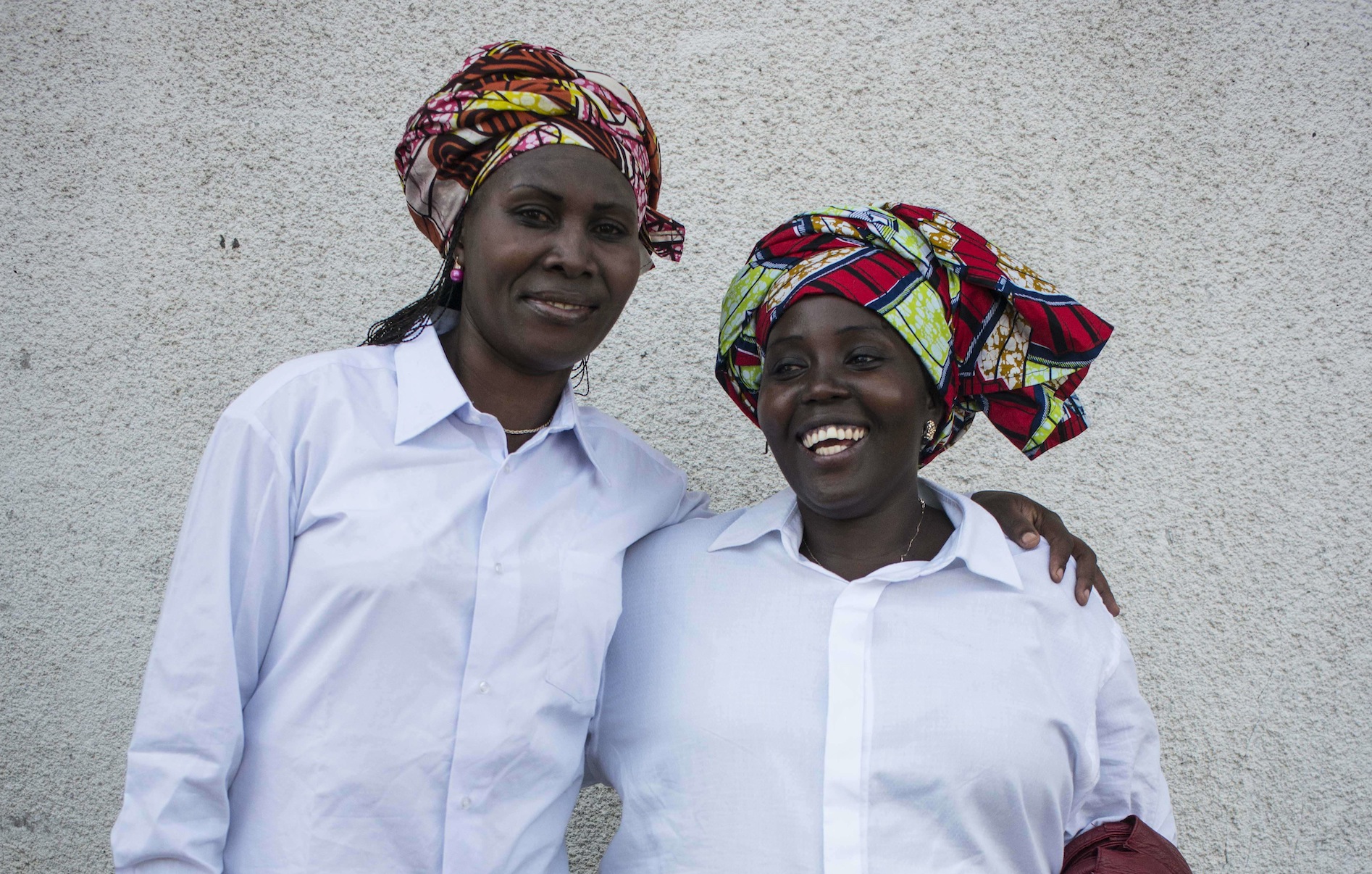In Eastern Congo, a community heals and rebuilds around its church.
Photos and text by Monique Jaques
Sunday mornings look different from the vigorous crowded vibe usually seen in Goma, the eastern capital of the Democratic Republic of Congo, which is home to just under 150,000 people. On this day shops are shuttered, residential buildings are abnormally quiet, and the omnipresent motorcycles seem to be stowed. Slowly you can see one or two people on the street, women teetering around puddles in the muddy roads, perhaps holding a child or two. Eventually more and more join like streams trickling into a river, all heading for La Source.
La Source is a 20-year-old Pentecostal church founded by Pastor Banyene Bulere, a Goma native, shortly after the first Congo War in 1997. Intended as a place for sanctuary and healing, Pastor Bulere leads the well-attended weekday mass and beloved Sunday masses both in French and Kiswahili, the local dialect. The building is built simply in a Congolese style, a one-floor building with a large room. Glass is expensive, so the windows are simple cutouts in the stucco walls
Eastern Congo is no stranger to violence. It is a region blessed with natural resources such as coltan, cobalt, gold and uranium, but it is plagued by conflict and discourse. Three wars have left the country with an epidemic of refugees, child soldiers, rape victims and orphans. Now, after M23, the local armed militia, was driven out of Goma this spring by the United Nations, locals are beginning to rebuild and recover.
La Source is the place to see and be seen, as few social structures such as clubs or guilds are intact after the war in the DRC. Therefore, church-going is a necessary part of the social structure, as well as an essential part of the Congolese religious tradition. Roughly 95 percent of the population is Christian. Several bring their own Bibles to follow along with scripture, as the church does not provide them. Every member strides through the church gate with a smile.
All members dress to impress, following the rich Congolese heritage of fashion and color, almost as if La Source is a weekly prom where attendees try to outdo each other. The path through the courtyard becomes an impromptu runway, where attendants show off their attire. Kasoki, a young seamstress, tells me she hasn’t worn the same combination of blouse, skirt and hat twice, and often borrows from family members to keep up with her sartorial style. A couple matches head to toe in baby blue. Many men follow the cult of Sapeurs, (Society of Ambianceurs and Elegant Persons) a movement emphasizing elegance and tradition in menswear, which is popular in Kinshasha, the country’s capital, and is beginning to take hold in Goma. Sapeurs wear colorful suits with matching ties and pocket squares. Some wear fedoras and use canes. Before and after the mass, members mill about observing and commenting on each other’s fashion.
[hr style=”striped”]
Slideshow
[slider navigation_style=”both” custom_slider_transition=”move”]
[slide]
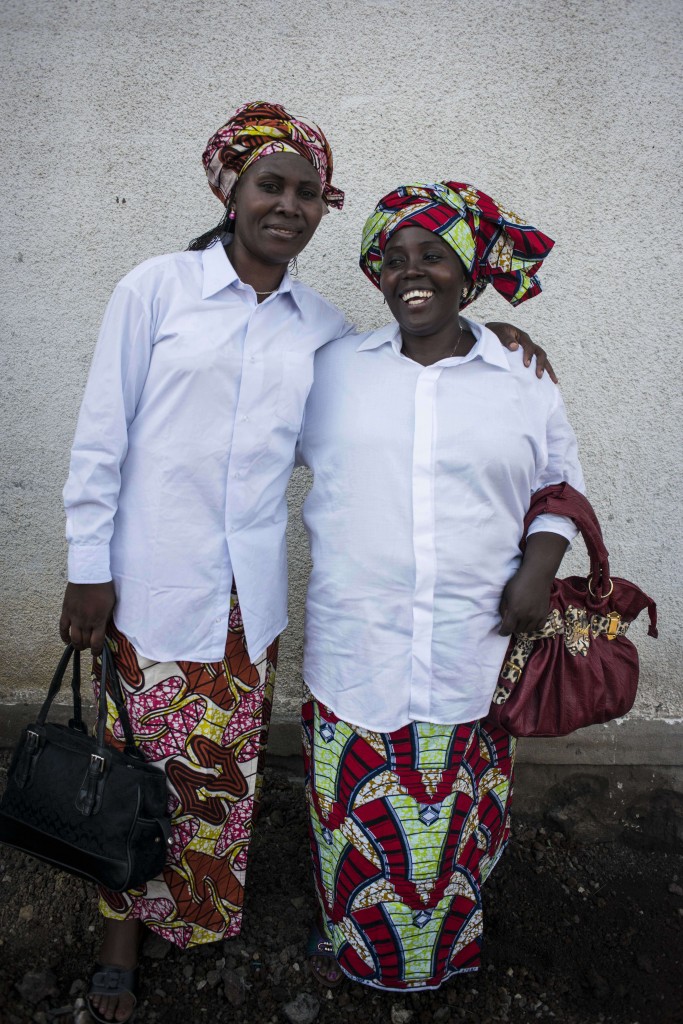
[/slide]
[slide]
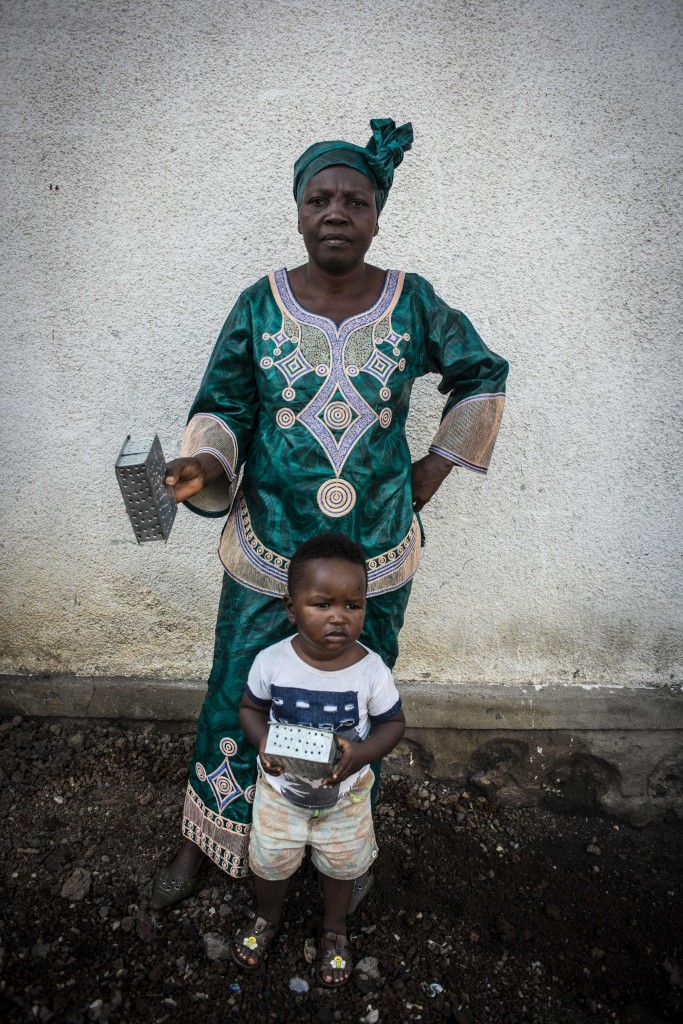
[/slide]
[slide]
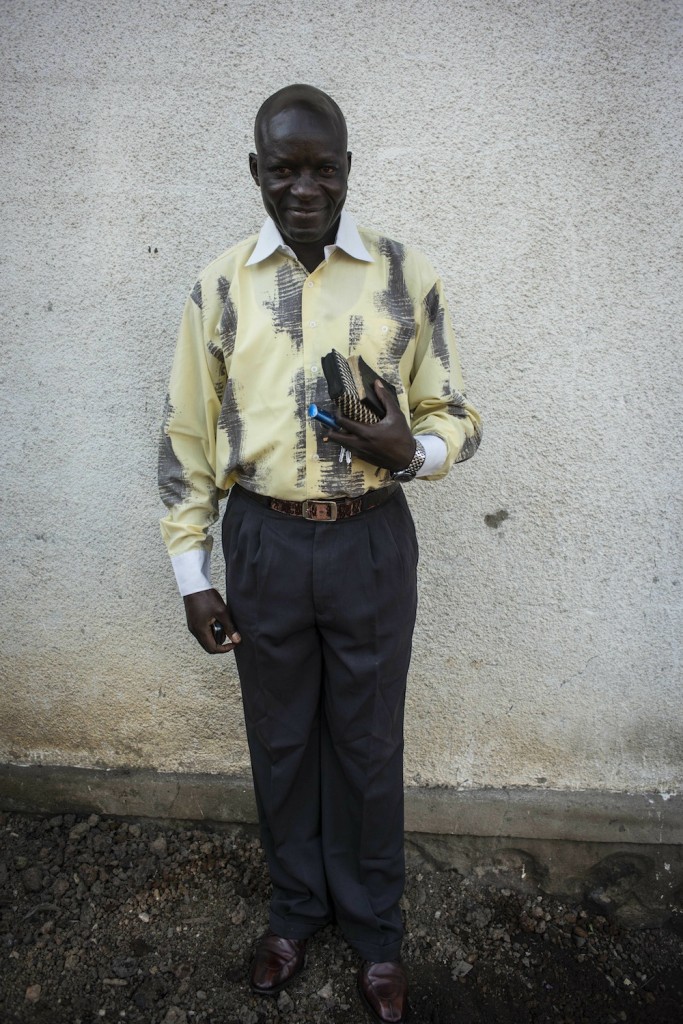
[/slide]
[slide]
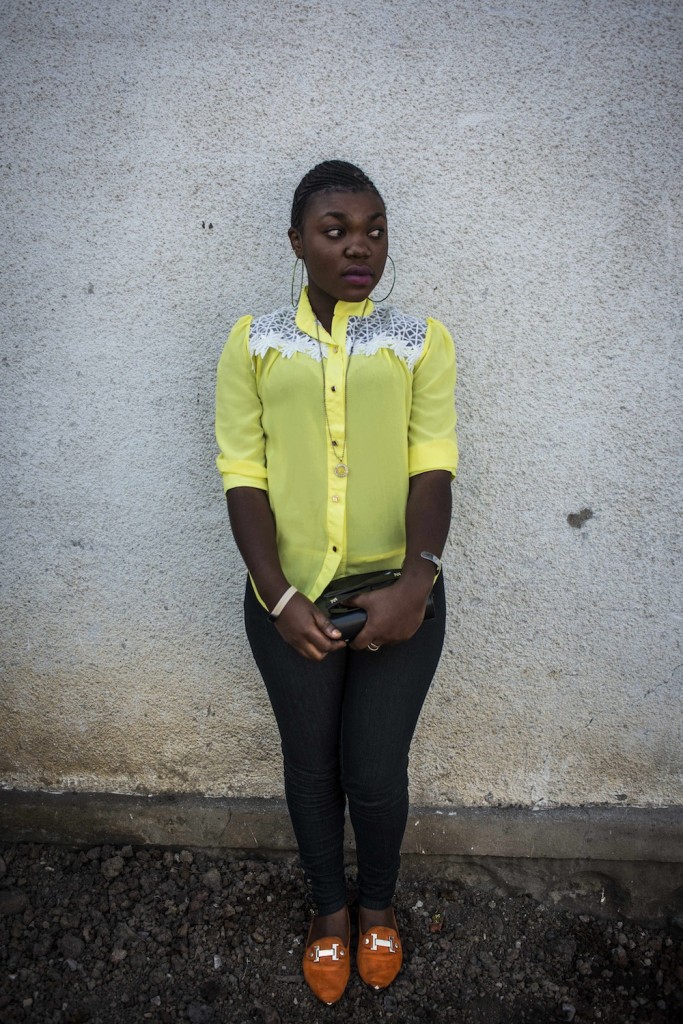
[/slide]
[slide]
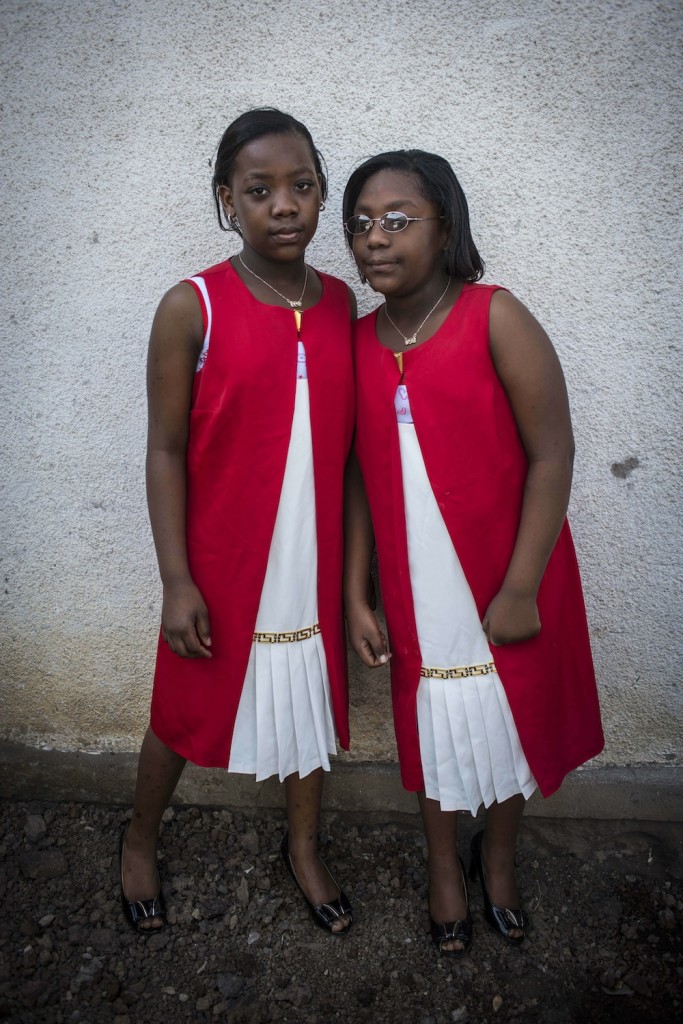
[/slide]
[slide]
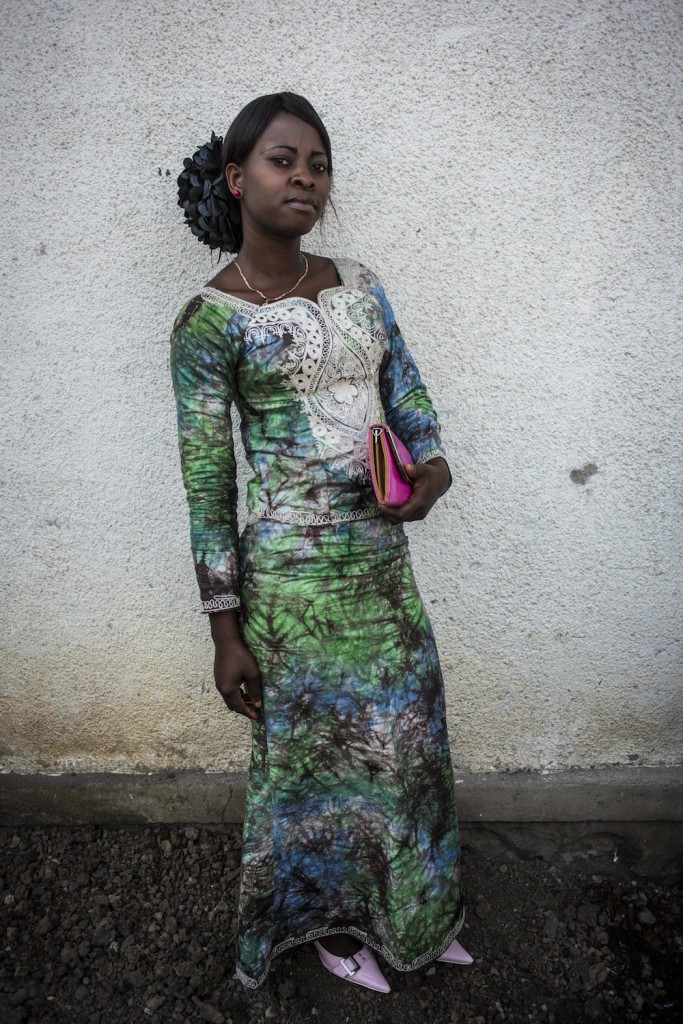
[/slide]
[/slider]
[hr style=”striped”]
Members arrive early and pour in to fill every space on the wooden pews before overflowing into white plastic picnic chairs. Those with seats are lucky; latecomers often have to stand for mass, which can run more than three hours in the humid Congolese heat. Family members and friends save seats for each other and bow their heads, exchanging gossip and news. Men cordially shake hands and greet one another warmly; two discuss a flourishing solar panel business.
Everyone settles in, buzzing with excitement, while fanning themselves with church hats and a handful of programs detailing the order of service, songs, and musical performances. Those who arrived early saw the choir practice and a small cluster of children mimic the dance moves. The mass begins with a soft French hymn from one of the four choirs, all wearing white button-up shirts and traditional African print skirts that are colorful and geometric.
Pastor Bulere begins thanking the band, the other choirs and selected members while slowly advancing the energy in his speech. He then asks all newcomers to stand up and introduce themselves, praising their courage for attending. It is my first time at La Source, and I am introduced by my friend who brought me as a visiting journalist. I speak to the crowd in French and tell them how excited I am to participate in the event. Two twins wearing matching red dresses stand up and announce it is their birthday and bear witness to God, thanking him for every day they have been on the planet. A man announces he is at the church for the first time as he has converted from a different church. This is met with great applause. Each man or women tells a bit about themselves, their family and their experiences before passing the mic off to the next participant. As this is Congo, no one is without loss, yet everyone who speaks mentions forgiveness. It is a gathering of mothers and children, businessmen, orphans and refugees, rape survivors and former child soldiers, though this is not discussed. The focus is on community when in this building, says Pastor Bulere.
Pastor Bulere then excitedly calls on the next choir, whose song begins slowly; they sing of healing and faith. Every verse grows faster and faster and becomes more fervent. Ratcheting up the passion, Pastor Bulere calls several people up to the stage. Suddenly, people are out of their seats, dancing and singing while praising what they have and what they will receive. Homemade drums appear out of nowhere and are thumped to the beat. A child, a plastic chair and several Bibles are lifted in unison with the song. Just as you think they couldn’t possibly move any faster, the tempo increases along with the passion and intensity. An elderly woman faints. This is Sunday at La Source. This is how a community embraces light and forgiveness.
[hr style=”striped”]
Monique Jaques is a photojournalist based in Istanbul. She has spent the past four years focused on documenting issues in the Middle East as well as Afghanistan and India. After graduating from New York University’s Photography and Imaging program she traveled extensively through the region and landed in Turkey. Recently her project ‘Growing Up on The Gaza Strip’ was shortlisted for the 2013 Photocrati Grant, and she is part of the 2014 ’30 Under 30 Female Photographers’ list from Photoboite. Her work has been published by The New York Times, The Wall Street Journal, The Telegraph,The Christian Science Monitor, GEO, The Guardian, and CNN, among others. Follow her on Twitter at @moniquejaques.
The International Women’s Media Foundation supported Monique Jaques in reporting from the Democratic Republic of Congo.

